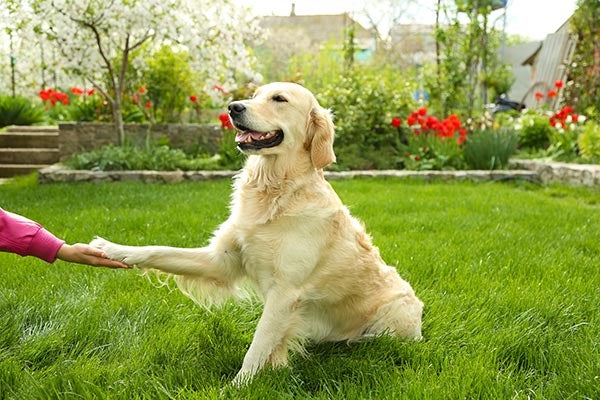
One of the most amazing things about dogs is their intense interest in humans. Compared to other animals, dogs have an uncanny ability to read our emotions, understand our gestures, and cooperate with us. But not every dog shows the same degree of human-centered focus. Some breeds are more independent than others, and even within breeds there are differences between dogs. Recent research published in the journal Hormones and Behavior suggests that oxytocin, sometimes known as the love hormone, may be the reason why dogs differ in their collaborative behavior toward humans.
Oxytocin plays a role in the dog-human bond. Levels are known to increase in people and dogs when we stare into each other’s eyes or when there is physical contact between us. But not all dogs behave in the same way in response to oxytocin, and there seems to be a genetic explanation. Previous studies have found a connection between oxytocin receptor-linked genetic material and human-directed social behavior in dogs. This led Persson et al. at Link√∂ping University in Sweden to wonder if oxytocin-related genetic differences were also involved in a dog’s willingness to cooperate with people.
To explore this question, the researchers presented 60 Golden Retrievers with an unsolvable task, while manipulating their oxytocin levels with a nose spray. Before the study began, owners swabbed each dog’s cheek to collect DNA from skin cells, and three genetic markers associated with the oxytocin receptor gene were measured. This allowed the scientists to determine which variety of the oxytocin-related gene each dog possessed.
First, the dogs were taught to open a device that contained a treat by pushing aside the Plexiglas lid on the top of the device. However, during testing, the lid was attached to the device and was impossible for the dog to move so he or she could not access the treat, making the task unsolvable. The experimenters recorded each dog’s behavior and the time each dog spent working on the problem on his or her own before turning to a human for help. Before the dogs were given access to the testing device, they randomly received a nasal spray of either oxytocin or saltwater solution. The oxytocin spray increased the amount of the hormone in the dog’s blood supply, whereas the salt water served as a neutral control condition.
The results showed that dogs reacted differently to the oxytocin nasal spray depending on their genetic variant. One of the variants increased the amount of physical contact the dog sought with a person, while the opposite was true for another variant. This demonstrated an association between the dog’s oxytocin levels, the genetic variant possessed by the dog, and the resulting behavioral response. In addition, previous research has shown that this same genetic variation also occurs between breeds. Therefore, genetic variability in oxytocin response could help explain the difference in human-directed social behaviors between different breeds, as well as between individual dogs. In other words, some dogs may be more human-focused than others because of their DNA.

Interestingly, the study may also have answered a question relating to the domestication of dogs and how they differ from their wolf ancestors. Dogs usually turn to people for help when faced with an unsolvable problem, but wolves are less likely to do so. Dogs also communicate with eye contact in a way not used by wolves. And of course, wolves don’t seek interaction with people in the same way as dogs. This is true even with wolves that are completely socialized to humans, meaning that dogs acquired a unique ability to collaborate with humans during their domestication.
According to the researchers, oxytocin may have played a key role in the development of these dog-specific skills. In addition, as part of the study they determined oxytocin-related genetic markers for 21 wolves that were either raised at a wildlife park or were wild-born wolves living in captivity. Just as with the Golden Retrievers, they found genetic variation in the wolves, as well, suggesting that this variability existed even in the early ancestors of domestic dogs at least 15,000 years ago. It’s possible that those early wolves with a genetically based well-developed ability to collaborate with people may have fared better around humans or been actively selected by humans over their less cooperative counterparts, leading to the unique abilities we see in dogs today.

